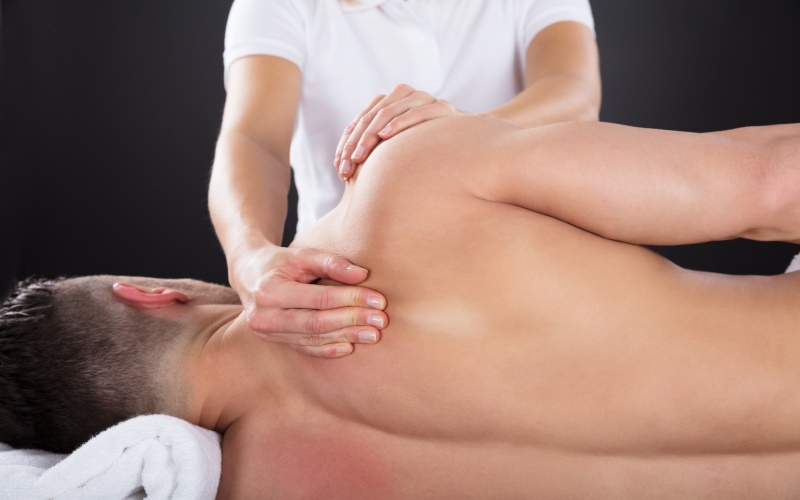Osteopathy is a widely used treatment for a range of different conditions, but many people still don’t know very much about what osteopathy is or what it can treat. In this article, we’ll look at the techniques and principles of osteopathy, and why it might be a good choice for you.
Seeing an osteopath
Osteopathy is an inexpensive treatment and you can make an appointment with an osteopath at a local clinic quickly and easily. Many operate services such as a back pain clinic or sports injury clinic, and offer other services in addition to osteopathy, such as sports massage or acupuncture.
Osteopaths follow a minimum 4-year qualification before they can practice, and are registered with and regulated by appropriate professional bodies, such as the General Osteopathic Council in the UK. Osteopaths also undergo regular Continuing Professional Development.
What is osteopathy?
Osteopathy is a physical therapy concerned with treating the musculoskeletal system. That means the bones, muscles and soft tissues such as ligaments and tendons that support and connect your bones and muscles.
The guiding principle of osteopathy is to allow the best conditions for the body’s natural healing mechanisms to work. This means ensuring the body is well aligned and balanced, ensuring blood flow to areas of the body which are injured, and working on any areas of blockage or tightness, be that tight or sore muscles, poor posture, or anything else.
Osteopathy is a holistic therapy, meaning practitioners consider the body as a whole, not just the part which may be injured or in pain. Osteopaths do not prescribe drugs, and osteopathy is considered a conservative and non-invasive treatment.
What techniques do osteopaths use?
Osteopaths use a variety of techniques, some of which are common to other physical therapies such as physiotherapy or chiropractic, and some of which are unique to osteopathy.
The most well-known osteopathic technique is the high-velocity thrust or HVT. This involves the practitioner directly manipulating joints of the spine or elsewhere, pushing them into alignment with a special technique. This creates a cracking or popping sound which is characteristic of osteopathy. Although bones ‘cracking’ can feel daunting, it is a completely harmless procedure and the sound is simply air escaping from the joint, no different to if you crack your fingers.
Osteopaths also use massage, such as deep tissue massage and myofascial release, and joint mobilization – moving the joint around its full range of motion to loosen tight areas.
Many osteopaths also incorporate dry needling, a form of acupuncture. Dry needling differs from traditional Chinese acupuncture in that there is no recognition of subtle energy pathways running through the body. Instead, it is based simply on the medical effects of inserting a very fine needle into a sore muscle, which causes an increase of blood and white blood cells to the area, resulting in faster healing.
What conditions can osteopathy treat?
The nature of osteopathy means it’s an ideal treatment for musculoskeletal pain. Back pain, sports injuries and any problems with joints and muscles are all good candidates for osteopathic treatment.
There are other conditions which can also be treated or managed better through the use of osteopathy. Sufferers of chronic pain conditions such as arthritis or fibromyalgia can often find much relief through osteopathic treatment. Osteopathy is also a recognised treatment for headaches and migraines, as in many cases these have a musculoskeletal cause and can be aided by a reduction of tension in the neck and head. An osteopath will be able to tell you at your initial assessment whether they can help in your particular case.
Finding an osteopath
In most places you can find an osteopath by searching Google for osteopaths in your area. Professional bodies for osteopaths also have directories of their members, so it’s also possible to search these online directories for a registered osteopath near you.
Many will offer a free telephone consultation to see whether they can help you before booking. Check for qualifications and reviews and be sure to find a practitioner who you are happy with.

